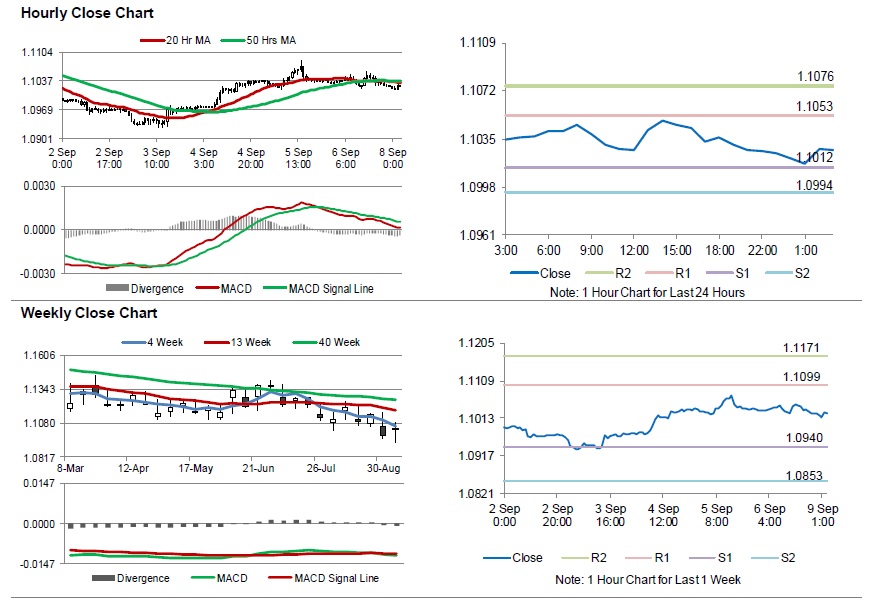For the 24 hours to 23:00 GMT, the EUR declined 0.09% against the USD and closed at 1.1026 on Friday.
On the data front, Euro-zone’s seasonally adjusted final gross domestic product (GDP) rose 0.2% on a quarterly basis in 2Q 2019, meeting market expectations and preliminary figures. In the prior quarter, the GDP had recorded a rise of 0.4%.
Separately, in Germany, the seasonally adjusted industrial production unexpectedly fell 0.6% on a monthly basis in July, declining for the second consecutive month and defying market consensus for a rise of 0.3%. In the preceding month, industrial production had recorded a revised drop of 1.1%.
In the US, data showed that non-farm payrolls climbed less-than-expected by 130.0K in August, following a revised level of 159.0K in the prior month. Market participants had envisaged non-farm payrolls to register a rise of 160.0K. Moreover, the nation’s average hourly earnings advanced 3.2% on a yearly basis in August, surpassing market consensus for a gain of 3.0%. In the previous month, average hourly earnings had recorded a revised rise of 3.3%. Meanwhile, the US unemployment rate remained steady at 3.7% in August, in line with market anticipations.
In the Asian session, at GMT0300, the pair is trading at 1.1026, with the EUR trading flat against the USD from Friday’s close.
The pair is expected to find support at 1.1012, and a fall through could take it to the next support level of 1.0994. The pair is expected to find its first resistance at 1.1053, and a rise through could take it to the next resistance level of 1.1076.
Looking ahead, traders would await Euro-zone’s Sentix investor confidence index for September along with Germany’s trade balance data July, set to release in a few hours. Later in the day, the US consumer credit data for July, will keep traders on their toes.
The currency pair is trading below its 20 Hr and 50 Hr moving averages.

